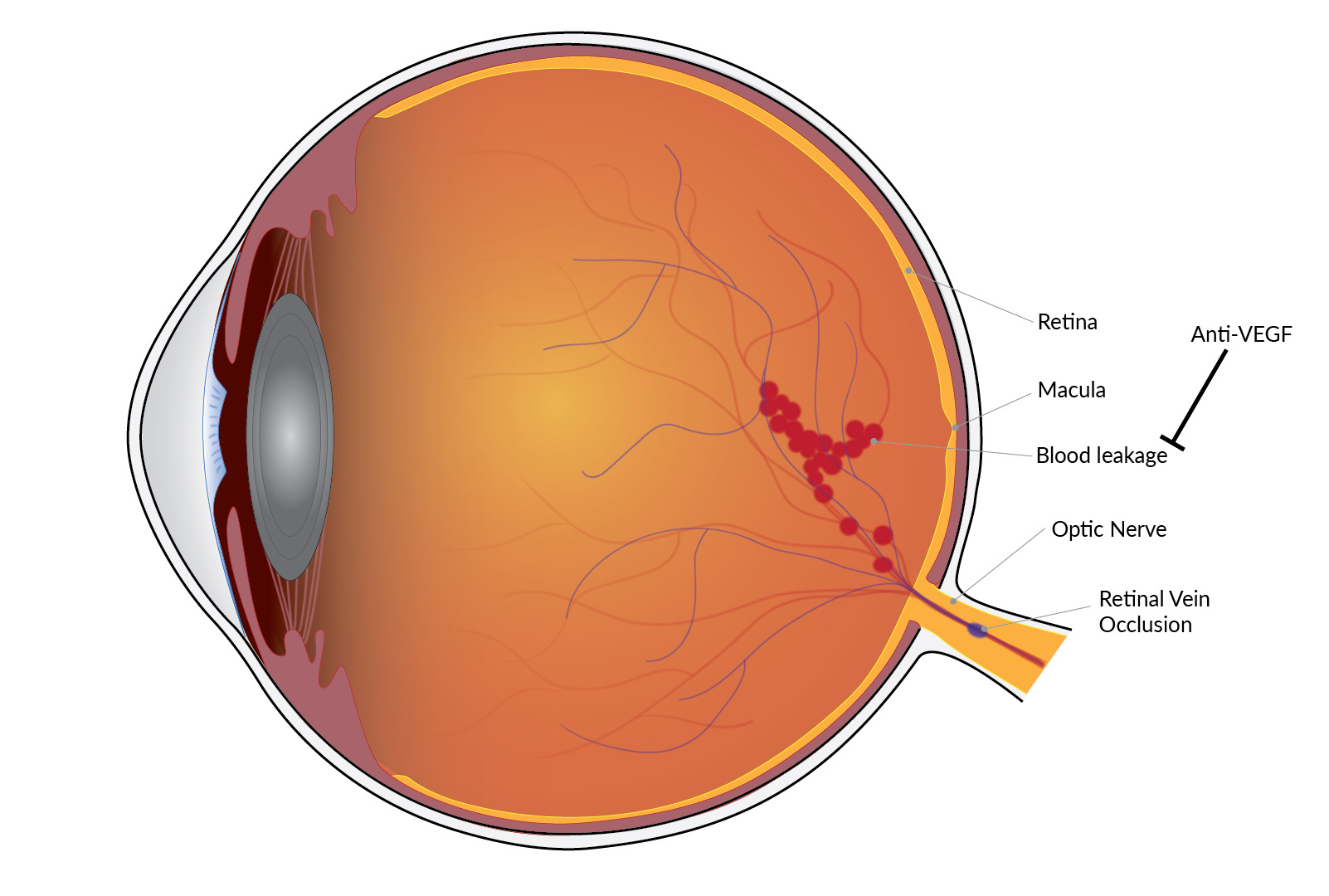You are here
May 3, 2022
Treatment for macular edema has long-lasting gains
At a Glance
- A treatment for macular edema due to retinal vein occlusion yielded vision gains for at least five years, although many patients required ongoing treatment.
- The study shows that macular edema from retinal vein occlusion can be successfully treated with continued monitoring and individualized therapy.

Retinal vein occlusion is a blockage of the veins carrying blood away from the retina. This can lead to swelling and fluid leakage. The result is an unwanted buildup of liquid at the back of the eye known as macular edema. If left untreated, the condition can blur vision and eventually lead to blindness.
The blood vessel leakage and swelling in the retina is caused by vascular endothelial growth factor (VEGF), which is released when blood flow is disrupted. The Study of COmparative Treatments for REtinal Vein Occlusion 2 (SCORE2) compared two anti-VEGF drugs, aflibercept (Eylea) and bevacizumab (Avastin) in 362 patients. Researchers gave monthly injections over six months to people with macular edema from central retinal vein occlusion, which affects the entire retina, or hemi-retinal vein occlusion, which generally affects about half the retina. The study found that the two treatments were equally effective.
The initial SCORE2 study period was 12 months. After that, participants were treated at their physician’s discretion. In their new report, SCORE2 researchers led by Dr. Ingrid U. Scott of Penn State University assessed participants 5 years after their initial treatment. The study was funded in part by NIH’s National Eye Institute (NEI). Results were published in the American Journal of Ophthamology on April 21, 2022.
The researchers found that most doctors reduced the frequency of anti-VEGF injections after 12 months, and some switched their patients to the other anti-VEGF drug. At five years, many participants had lost some visual acuity compared to the 12-month mark. However, they retained significant improvement compared to the beginning of the study.
There were no significant differences between the two treatments. The group originally assigned to bevacizumab, however, received more injections in the follow-up period.
“This five-year study tells us a lot about what’s happening with retinal vein occlusion patients in the real world,” Scott says. “Prior to this study, retinal vein occlusion was widely considered an acute illness. This study shows that retinal vein occlusion is a chronic disease. It also underscores the importance of disease monitoring and individualized treatment to achieve the best possible vision.”
Related Links
- Repurposing Drugs to Treat Age-Related Macular Degeneration
- Avastin as Effective as Eylea for Treating Central Retinal Vein Occlusion
- Long-Term Benefits of Age-Related Macular Degeneration Treatments
- Protein Involved in Diabetic Eye Disease
- Study Confirms New Treatment for Diabetic Macular Edema
- Macular Edema
References: Month 60 Outcomes after Treatment Initiation with Anti-VEGF Therapy for Macular Edema due to Central or Hemi-Retinal Vein Occlusion. Scott IU, VanVeldhuisen PC, Oden NL, Ip MS, Blodi BA; SCORE2 Investigator Group. Am J Ophthalmol. 2022 Apr 21:S0002-9394(22)00144-1. doi: 10.1016/j.ajo.2022.04.001. Online ahead of print. PMID: 35461831.
Funding: NIH’s National Eye Institute (NEI); Regeneron, Inc; Allergan, Inc; Research to Prevent Blindness.

